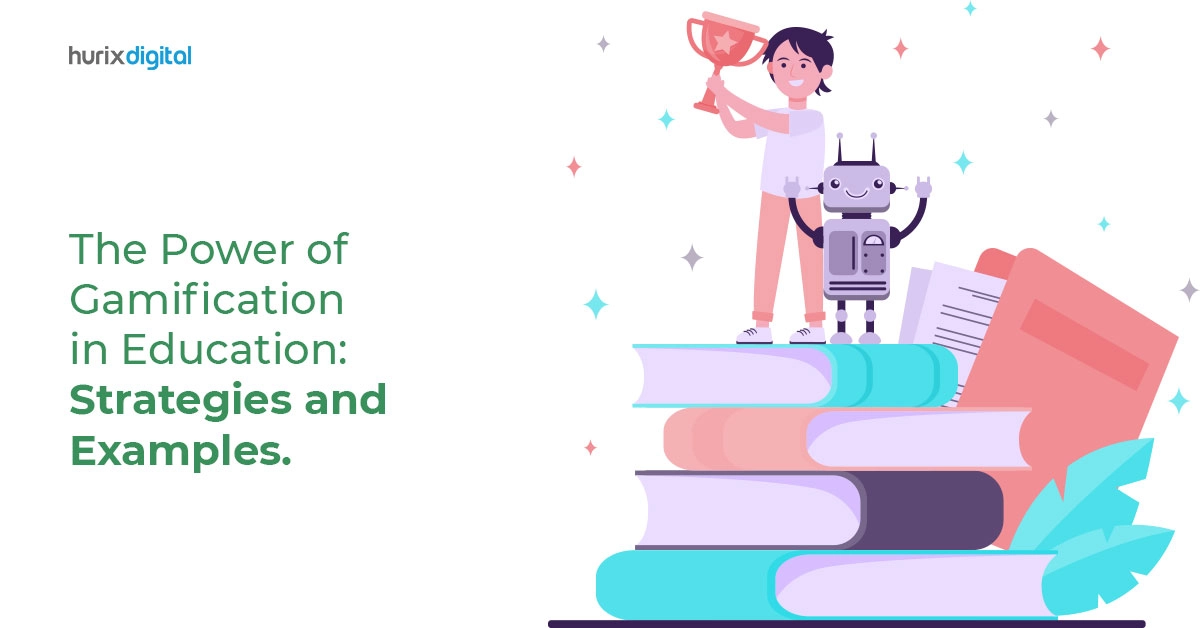Summary
The blog post emphasizes the significance of gamification in online training course development. It discusses how gamified elements such as badges, points, leaderboards, and rewards enhance learner engagement, motivation, and knowledge retention.
Gamification in learning is the addition of game elements to content to enhance the material and make it more engaging. It involves applying game thinking to instructional or educational content.
Gamification is particularly prevalent in online training courses, opening up more possibilities for gamification in corporate training. It is a popular strategy used in e-learning and corporate training to make online training more interactive.
Table of Contents:
- What Are Gamification Techniques?
- Why Online Training Needs Gamification
- How to Design Gamification
- Summing Up
A report by Gartner predicts that more than 70% of the leading 2000 global companies have adopted gamification as a strategy. The global market for gamification strategies is projected to reach $58.8 billion by 2028, with education emerging as the top segment.
What is gamification in education? Adding game elements to educational content makes the learning process more game-like. Game elements could include points, rewards, and leaderboards. You could also add story elements to a course, present learners with a challenge, or create a character to narrate content in an online course.
What Are Gamification Techniques?
Gamification is about enhancing learning material to make it more fun, not designing an entire game.
How to gamify learning? Gamification involves many different techniques to make the learning process more participative.
1. Tests and Quizzes
Tests and quizzes are simple but effective techniques to assess learner performance, boost engagement, and reinforce concepts learned.
2. Challenges
Challenges are another technique that requires the learner to complete a specific task based on the learning material.
3. Other Gamification Techniques
These include points, tracking progress, badges, leaderboards, and levels, to help learners stay motivated. They can also include other rewards in addition to badges and leaderboards.
You can also add characters or other story elements like scenarios and branching options.
Why Online Training Needs Gamification
Since online training often lacks face-to-face interaction, keeping learners motivated and engaged can be hard. Integrating gamification in learning offers several benefits for online training courses.
1. Makes Your Lessons Interactive
Gamified learning experiences make lessons more interactive. Features like flip cards, quizzes, puzzles, matching exercises, discussion boards, and other activities make the lessons more fun. Adding a timer to a lesson can help make it more gamified and improve learner focus.
2. Tracks Progress and Points
Gamification is a great way to track progress through points, scores, levels, and badges. It can also mark key learning milestones. Additionally, you can use e-learning technology to enable learners and administrators to track progress.
3. Makes Training Fun and Engaging
Gamification makes online training enjoyable and brings in a playful element. It replaces traditional training methods with participative activities and motivating factors. Making the training experience more engaging can boost workplace morale and make employees more open to training.
4. Improves Knowledge Retention
A more engaging training course helps learners retain information better. Adding an element of competition through points and leaderboards motivates employees to learn better because it helps them stay actively involved.
5. Encourages Participative Learning
Features like quizzes and tests can help make learning more participative. They can also motivate learners to complete the training and develop a habit of active learning. Further, gamification in learning makes it feel less like a responsibility or chore and more like an activity.
6. Allows for Easy Performance Assessment
Gamified learning allows a learner’s performance to be easily assessed with the help of features like levels or other markers of experience. Levels can indicate the extent of a learner’s progress, while points and badges can indicate progress and experience gained.
Scores on tests, quizzes, and assignments allow trainers to assess a learner’s performance more precisely. Leaderboards can help gauge a learner’s progress and performance relative to others, which is helpful for trainers. They can show which learners are performing best and which learners may need assistance.
How to Design Gamification
1. Make it Personalized
There are many ways to personalize games. One way is to allow learners to have their online persona to represent themselves. This could take the form of a personal user id color or an avatar that will be used in the content, including the leaderboards.
You can also have branching options that enable them to choose their learning path instead of following a prescribed path.
2. Add Levels
Very easy or difficult activities can cause the learner to lose interest in the gamified content. By adding different levels of content, you can include more challenging material in stages to keep the learner engaged and involved. This pushes learners to understand the material better and pass it to the next level. It also allows learners to go at their own pace.
3. Add a Variety of Activities
The online training course can have a range of different interactive activities such as tests, challenges, mini-games, and competitions between learners. This creates variety in the training course and prevents it from becoming repetitive or monotonous.
4. Add Rewards
Rewards are a great way to motivate learners and make the course more absorbing. Learners enjoy content with rewards and the ability to “win.” This provides an incentive through the learning process and encourages them to progress through the course.
Rewards and levels give learners a sense of accomplishment after completing certain tasks. They also provide a way to assess the learner’s performance.
5. Give Badges
Add badges for certain accomplishments and pin them to learner profiles to boost their sense of achievement. Connect badges to particular skills or topics to encourage learners to reach specific goals.
6. Have a Leaderboard System
A leaderboard is a scoreboard that displays the names and current scores of competing learners. This motivates learners to progress and learns better to score more points and do better on the leaderboard.
7. Test the Gamified Features
When adding gamified features to training, it’s a good idea to check that the game mechanics are functioning well by testing them thoroughly. Check that features like rewards and points are working properly and that the relevant content is present along with the related game features.
Also Read: Strategies for Content Digitization in Higher Education
Summing Up
Gamification in learning is a great way to make your online training course more interactive and effective and keep learners involved and motivated.
Hurix offers online learning solutions for training courses. Its e-learning solutions include puzzles, problem-solving games, scenarios, challenges, and more. Get in touch with Hurix Digital to gamify your learning endeavors!
Also Read – Gamification in Learning: 7 Powerful Strategies to Implement







